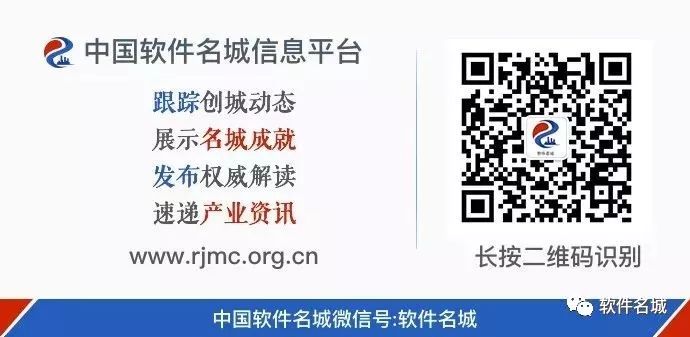Software is a carrier of knowledge and intelligence, and software restructuring, distribution, dissemination, amplification, and ubiquity of knowledge form the logical basis for the emergence of the “software defined” concept. Essentially, if software can define everything, it is because knowledge is ubiquitous, and software is also ubiquitous, that is, “software ubiquity”. The development process of the world is a continuous exploration and development of knowledge. The initial concept of software definition was proposed from a micro-technical perspective within the academic community, mainly including software-defined hardware, software-defined networks, software-defined storage, software-defined data centers, etc. However, as the trend of industrial development and integration has intensified, the penetration of software into various industries has become increasingly evident. The roles of software in “empowerment”, “valuation”, and “intelligence” have been fully demonstrated, coupled with the extensive use of industrial computers and embedded software, the promotion of smart city construction, and the convenience of information services, which has continuously expanded the scope of software usage, gradually forming a basic social existence of “software ubiquity”. Especially as the public’s awareness of the presence and benefits of software gradually increases, combined with widespread social media dissemination, this forms the basic conditions for the widespread dissemination of the “software defined” concept. Today, the scope of software definition is becoming broader, and the concepts of software defining everything and software defining the world are emerging. In an era of frequent concepts, systematic understanding of software definition is particularly important. This article analyzes the concept of software definition from multiple dimensions, including technology, industry, and macroeconomics, and clarifies related concepts for industry reference, aiming to guide the industry to have a more objective understanding of “software definition”.
1. “Software Defined” Depicts the Phenomenon of Software Penetration
Currently, software has permeated every corner of our lives, becoming ubiquitous. Software has not only changed industries such as transportation, retail, finance, and telecommunications, but it is also changing networks, servers, and data centers. Software has almost transformed all forms of industry and business models on Earth, and it is even changing the world on which humanity relies for survival. Humanity has begun to enter an era of software-based existence. Against this backdrop, the concept of software defined (Software Defined, abbreviated as SD) is rapidly becoming a hot industry term, gaining momentum.
Today, with the comprehensive coverage of computer applications, the scope of software applications is becoming broader, penetrating every corner of society and every nerve ending. At the same time, various industrial control programmers, industrial computers, embedded devices, various testing instruments, medical instruments, televisions, broadcasting, entertainment devices, as well as smartphones, tablets, wearable devices, VR/AR, and other smart hardware, even in mice, monitors, game consoles, digital cameras, optical drives, hard drives, keyboards, routers, e-books, switches, modems, USB drives, motherboards, printers, plotters, etc., software has become an indispensable component to varying degrees. In those visible or invisible corners, software is playing roles that we can imagine or cannot imagine. In these devices, the “volume” of software varies, ranging from dozens of lines of code to hundreds of thousands of lines. In some special machines, the software content has reached astonishing levels. For example, a BMW 7 series car has over 500 million lines of software code, a Tesla car has 200 million lines of software code, and a Boeing 787 aircraft has over 1 billion lines of code. The F22 fighter jet has 13 computer systems onboard, including radar, flight control, fire control, navigation, meteorology, and non-avionics systems, which are connected to form a computer network system using the US military standard 1553B dual bus. Its onboard software has more than 2 million lines of code to help people operate the aircraft and reduce the pilot’s workload; the latest F35 aircraft has onboard software with 9 million lines of code, and when calculating related ground navigation and landing support systems, a single flight is supported by hundreds of millions of lines of software code for exceptionally powerful digital activities.
If there were no software, all computers would become mere decorations, and all devices operated by operating systems would collapse. Almost all computers, smartphones, industrial control computers, robots, CNC machine tools, airplanes, satellites, missiles, high-speed trains, and cars would become useless. The power system would collapse, modern factories would shut down, trains would stop running, and banking, securities, and insurance financial systems would become chaotic, network services would disappear, everyone’s smartphone would become a useless piece of metal, and all recorded digital data would become unreadable.
If there were no software, radio broadcasts would just be a segment of radio waves. Without software, BAT’s search platforms, e-commerce platforms, and social platforms would not operate, let alone withstand the massive concurrent consumption of “Double 11”. Without software, we could not achieve personalized customization, precision marketing, cloud manufacturing, remote diagnosis, and other intelligent production modes. Without software, we could not utilize the Didi platform or Mobike to change travel modes, and we could not achieve remote office methods that are mobile and networked, nor enjoy new life and entertainment modes brought by online group buying. We can no longer imagine a world without software.
Therefore, “software defined” depicts a phenomenon of software penetrating all areas of the economic and social fields. The widespread and deep penetration of software constitutes the practical foundation for the emergence of the software defined concept.
2. Definition of Software
To clarify the connotation of the “software defined” concept, it is essential to first understand the definition and essence of software. Software is a collection of computer data and instructions organized in a specific order. Generally speaking, software is divided into system software, application software, and middleware that lies between the two. Software not only includes computer programs that can run on computers (here, computers refer to a broad sense of computers), but also the documentation related to these computer programs is generally considered part of the software. In simple terms, software is a collection of programs plus documents. Broadly, software also refers to management systems, ideological systems, laws, and regulations within the social structure.
The national standard defines software as: computer programs, procedures, rules related to computer system operations, as well as possible documents, files, and data.
Based on the definition of software, it is analyzed that software has the following characteristics:
First, it is intangible, having no physical form, and its functionality, characteristics, and quality can only be understood through its operational status.
Second, software involves a significant amount of intellectual labor; human logical thinking, intelligent activities, and technical skills are key to software products.
Third, software does not age or wear out like hardware, but it does require defect maintenance and technical updates.
Fourth, the development and operation of software must rely on specific computer system environments, showing dependency on hardware. To reduce this dependency, the concept of software portability has been proposed in development.
Fifth, software is reusable; once developed, it can be easily copied, forming multiple copies.
3. Definition of “Definition”
Before describing the definition of “definition”, it is necessary to clarify that the term “definition” can be used as both a verb and a noun. The distinction in part of speech is significant for understanding software definition. In a sense, the term “software defined” itself may have different interpretations at face value.
According to Baidu Baike, a definition refers to a precise and brief explanation of the essential characteristics of a thing or the connotation and extension of a concept; or describing or specifying the meaning of a word or concept by listing the basic attributes of an event or object; the defined entity or object is called the defined item, and its definition is called the definition item.
A definition is equivalent to the assignment of values to unknowns in mathematics, for example, “Let a certain unknown be known as the letter X to simplify calculations.” Assigning a certain meaning or image to a named term facilitates recognition and acknowledgment in communication.
4. What is “Software Defined”?
With the popularization and deepening of cloud computing and virtualization applications, software defined is becoming a hot topic pursued by industry enterprises and technology vendors. Software defined breaks the traditional IT architecture’s hardware-centric operating model, highlighting the important role and position of software in the entire IT infrastructure for the first time. However, software defined is different from virtualization, as it has thoroughly achieved the separation of software and hardware. Hardware is responsible for storage and computation, while software is responsible for management and control.
From a technical perspective, software defined means separating software and hardware through virtualization, pooling the three major computing resource pools of servers, storage, and networks, and ultimately achieving on-demand segmentation and recombination of these pooled virtualized resources. The concept of software defined is broad, encompassing various fields such as software-defined networks (SDN), software-defined storage (SDS), and software-defined data centers.
The idea of software defined originated in the mid-1990s when it aimed to promote innovation in networks by programming on a simple network hardware data path, known as dynamic networking. However, the failure to delineate a boundary between a common hardware layer and an open upper programming environment led to this idea not being realized in real-time. In 2006, with the emergence of virtualization technology, the separation of hardware and software was preliminarily solved, and the research on the idea of software defined regained attention.
In 2009, Professor Mckeown from Stanford University proposed the concept of software-defined networking (SDN) based on dynamic networking, which is centered around the layered thought of separating data from control. In the control layer, there is a logically centralized and programmable controller that grasps global network information, facilitating operators and researchers to manage, configure the network, and deploy new protocols, etc. In the data layer, switches only provide simple data forwarding functions, quickly processing matched data packets, thereby adapting well to the growing demand for traffic.
Compared to traditional architectures, software defined separates data and control. Software is responsible for managing, controlling, and scheduling hardware resources, while hardware is responsible for computing and execution. This idea is based on virtualization technology, which solves the problem of resource efficiency and greatly enhances resource elasticity and flexibility. Since 2009, industry giants such as VMware, IBM, HP, EMC, Cisco, and Huawei have successively developed their software defined solutions, which have been practiced in enterprises. From software-defined networks to network-defined storage, and then to software-defined data centers, software defined has fundamentally solved the problems that traditional IT architectures and even virtualization architectures cannot address.
The previous descriptions of “software defined” and its academic origins are expressed from a technical and micro-level perspective. Next, we will analyze the connotation of “software defined” by combining the definitions of software and “definition”. Software is a collection of digital instructions and data that run on hardware, extending human knowledge and intelligence. Based on the earlier definitions, “definition” means explaining essence, providing connotation and extension, and describing value. When we say “software defined X”, the English translation is Software Defined X (which literally translates to “software defined X”), essentially stating the state (value) that X can achieve based on the connotation and extension of software, emphasizing the maximization of functionality, value, and intelligence realized by software, highlighting the roles of software in “empowerment”, “valuation”, and “intelligence”.
5. What Does Software Define?
What exactly does software define? What is the difference between having software defined and not having it? This is a question we must answer. The prerequisite for answering this question is to identify what changes have occurred to the defined objects after software definition.
(1) Improving Utilization Efficiency
Whether it is software-defined networking or software-defined storage, the implementation of the software-defined approach is supported by virtualization technology. Virtualization breaks the tightly coupled architecture of hardware and software in traditional IT architecture, achieving separation between software and hardware, thus laying the foundation for the implementation of software-defined solutions. However, the separation of hardware and software in a virtualized environment is achieved by deploying virtualization software on physical hardware and then deploying operating systems and applications on the virtualization software, making this separation not thorough enough, and the improvement in resource efficiency still has certain limitations. However, software defined can thoroughly solve this problem. Because in a software-defined architecture, the hardware resource pool and software are completely separated, with software uniformly managing and scheduling resources. In this architecture, the efficiency of resource pools in a virtualized environment can be significantly improved.
(2) Reducing IT Investment Costs
The higher the IT efficiency, the lower the cost of purchasing IT hardware. But besides improving efficiency, under a software-defined architecture, software has no special requirements for the underlying hardware architecture. In other words, software-defined architecture can fully utilize existing IT resources without requiring enterprises to repurchase. Therefore, it can greatly reduce the IT cost investment of enterprises.
(3) Having Better Scalability
Since the implementation basis of software defined is the separation of data and control, it achieves a complete separation of the relationship between software and hardware. Changes in the underlying hardware do not directly relate to business operations, but are managed by software. This is like a truck filled with boxes; removing one box does not directly affect another box. In other words, whether removing hardware or adding hardware, it will not significantly impact the ongoing business. Software has a discovery mechanism that can timely handle the addition and removal of hardware. Therefore, software-defined architecture has better scalability and flexibility.
(4) Supporting Intelligent IT Transformation
As software-defined applications gradually mature, enterprises have begun to practice software-defined data centers by deploying computing, storage, and networks in a software-defined manner, making software-defined data centers more intelligent. Currently, software-defined data centers already have built-in intelligent features that can eliminate system complexity and create elastic computing without direct guidance from staff.
6. “Software Defined” Is Not “Software Decided”
While understanding the definitional role of software, we must not exaggerate the role of software infinitely. Given a hardware, what software can “define” is the connotation and extension of the hardware (the functions, values, and intelligence it can achieve). Through a series of predetermined logical and formatted “0/1” code sequences, software can drive the underlying functions of hardware, but software cannot “decide” what hardware is.
From a product perspective, no matter how powerful the roles of software in “valuation, empowerment, and enabling” are, it cannot change the basic attributes of hardware. For example, a smartphone can be “defined” as a “navigator”, “blood pressure monitor”, “radio”, “online banking”, etc., through the software APP. However, the CPU, storage, communication modules, and other hardware architectures “decide” that it is still a smartphone, and the calling function is the most basic. It is just that through “software definition”, the original hardware-centric traditional framework is broken, and the product’s functionality, flexibility, extensibility, security, and manageability are displayed through diverse software, making the smartphone more functional, valuable, and intelligent.
From an industry perspective, in the process of informatization development, except for a few system software, most software is application software. Due to the complexity of software programming, industry users’ professionals cannot proficiently master software programming techniques in a short time; therefore, most complex business needs to be completed by professionals from software companies. Similarly, professionals from software companies also cannot proficiently master the complex business and knowledge of a specific industry in a short time. We propose “software defined” to emphasize the empowering, valuing, and intelligent enabling roles of software as a tool, as well as its role in carrying and solidifying industry knowledge and experience. This does not mean that companies or personnel mastering software technology can “define” all aspects of social informatization.
Therefore, we must objectively recognize the role of “software defined” in industry development and not fall into the thinking of “software determinism” or “software decisionism”, as this is unrealistic and very harmful. If we compare computer hardware to an abacus and software to the rules for using the abacus, the quality of the rules directly “decides” the effectiveness of the abacus’s calculations. However, good rules (i.e., data processing algorithms or models) come from the knowledge of professionals engaged in various industries over many years, and long-accumulated successful experiences and data are something that pure software companies without industry backgrounds find it difficult to “define” or replace. In industries with complex demands, especially in complex product engineering in the industrial field, the development of industrial software is often not something that software developers can accomplish. For example, most industrial software in the U.S. is developed by professional engineers, which is a high-level refinement and summary of industry-specific knowledge. For large companies like Boeing and Airbus, while professional software like CATIA, CAD, CAM, and CAE is a source of their competitive advantage, it is not everything. Those capabilities that meet safety, speed, and economic requirements are entirely based on the knowledge and experience they have developed and summarized over many years. These unique skills (knowledge and experience) are what make them the strongest, and they cannot be bought or acquired in other ways. This indicates that the truly decisive factors are knowledge and experience, while software is merely a presentation of them to a certain extent. In this sense, software is both a tool and is not limited to being a tool. Therefore, before we objectively recognize “software defined”, we also need to objectively understand software and grasp its essence.
7. “Software Defined” and “Internet Plus”
At the micro level, “software defined” has a clear definition, but when the concept of “software defined” expands to the industry level, it overlaps with the concept of “Internet Plus”. However, the two concepts differ significantly in terms of the context and starting points from which they were proposed, as well as the emphases they highlight.
Simply put, “Internet Plus” refers to “the Internet plus various traditional industries”, but it is not a simple addition of the two; rather, it utilizes information communication technology and Internet platforms to enable deep integration between the Internet and traditional industries, creating new development ecosystems. It represents a new social form that fully leverages the optimization and integration roles of the Internet in social resource allocation, deeply integrating the innovative achievements of the Internet into various domains of the economy and society, enhancing the overall innovation and productivity of society, and forming a new economic development model based on Internet infrastructure and realization tools.
We might also say that the industry perspective of “software defined” is “software plus various traditional industries”, as every industry has been affected by software, being empowered, valued, and made intelligent by software. However, these two concepts still have significant differences. Compared to “software defined”, “Internet Plus” is a more macro and comprehensive concept. “Internet Plus” is a new economic and social development model proposed under the new normal of economic development, where the dynamics of economic and social development are insufficient. This model is characterized by using information communication technology (including software technology, but not limited to software technology) and Internet platforms to optimize resource allocation efficiency, and after integrating into various fields of the economy and society, it generates new productivity and new business models. It emphasizes utilizing the Internet to provide new momentum for economic and social development, driving model innovation and business format innovation. In contrast, the concept of “software defined” looks at things from a micro perspective, originally proposed from concepts like software-defined networks and software-defined storage, emphasizing the separation of software and hardware through virtualization and pooling the three major computing resources of servers, storage, and networks. However, when the concept of “software defined” is mapped to the industry level, it emphasizes the roles of software in empowering, valuing, and making intelligent hardware products, as well as its radiating and driving roles in the transformation and upgrading of traditional industries. This also includes the new business formats and model innovations brought about by software. “Software defined” also reflects the development of emerging business formats, focusing on the core and key aspects during the process of industry intelligence, highlighting the core and soul roles of software, and is a concept with distinct industry characteristics for supervisory departments of the software industry. In contrast, “Internet Plus” is a macroeconomic and social innovation term.
8. The Macro and Industry Management Perspectives of “Software Defined”
The previous descriptions of software defined are more focused on the technical level. However, at the industry and macro levels, when we refer to “software defined”, we often mean to emphasize the importance of software and its key role in the development of the industry (intelligent development).
(1) The Macro Economic Data Perspective of “Software Defined”
From the perspective of economic growth data, since 2000, China’s software industry has maintained a high growth rate, with the industry scale continuously expanding, and the added value accounting for an increasing proportion of GDP. In some developed cities, the added value of the software industry has reached over 5% of the city’s GDP, becoming a dominant industry in the economic sense, with some cities’ proportions even exceeding 10% (represented by China’s software cities), as shown in Figure 1. From the perspective of the scale of industrial sales revenue, in many cities, the scale of software sales has exceeded hundreds of billions, contributing significantly to urban employment and tax revenue. This indicates that the status of software in the national economy is continuously rising, and its importance is gradually increasing. The quality of urban economic development is largely influenced by the emerging industries represented by software. In this sense, software is defining the economic growth model of certain cities.
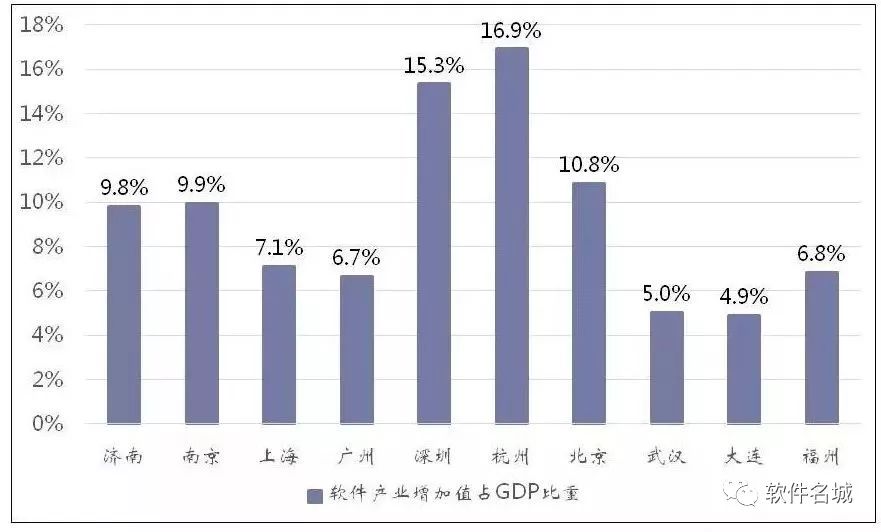
Figure 1 The Proportion of Added Value of Software Industry in the GDP of Some Chinese Software Cities in 2016
Data Source: Organized by the Ministry of Industry and Information Technology CSIP
From the perspective of industrial structure, in some central cities, the software and information technology service industry is not only an important component of the tertiary industry but also an important driving force for the transformation and upgrading of the tertiary industry. As the trend of industrial integration deepens, the software and information technology service industry will effectively promote the development level of productive service industries such as finance, transportation, logistics, and commercial tourism.
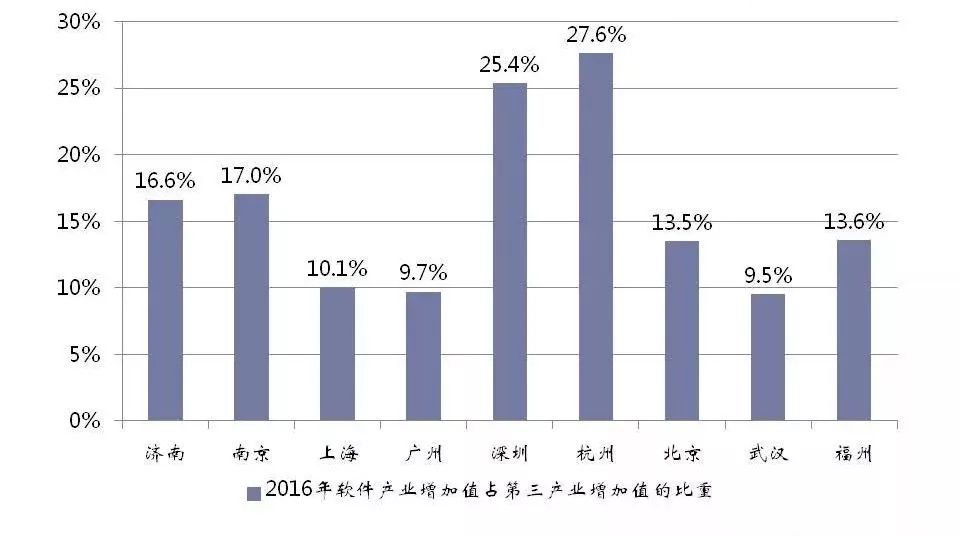
Figure 2 The Proportion of Added Value of Software Industry in the Tertiary Industry in 2016
Data Source: Organized by the Ministry of Industry and Information Technology CSIP
In Beijing, Shanghai, Shenzhen, Hangzhou, Guangzhou, Nanjing, and other places, the software and information technology service industry has become an important means for central cities to optimize, adjust, and renew their industrial structure. The leading industries of cities are continuously updated, giving rise to new driving forces for development, as shown in Table 1.
Table 1 Some Industry Directions for Optimizing Industrial Structure in Major Cities
|
City |
Some Industry Directions for Optimizing Industrial Structure |
|
Beijing |
Cloud Computing, Navigation and Location Services, Big Data, Information Security |
|
Shanghai |
Domestic Basic Software, Game Animation, Finance, Medical |
|
Shenzhen |
Communication, Entertainment, Consumer Electronics Embedded Software, Finance, Optoelectronics, Medical |
|
Hangzhou |
E-commerce, Finance, Mobile Internet Services |
|
Guangzhou |
Communication, Interactive Entertainment, Intelligent Manufacturing, Finance, Intelligent Transportation, Security Monitoring |
|
Nanjing |
Basic Software, Industrial Software, Cloud Computing, Big Data |
|
Chengdu |
Digital Media, Information Security, Mobile Internet Services |
|
Jinan |
Game Animation, Finance, Medical, Intelligent Manufacturing |
Source: Organized by the Ministry of Industry and Information Technology CSIP
From the perspective of innovation capacity and industrial benefits, the software and information technology service industry is a representative industry of innovation-driven development.
In terms of R&D investment, in recent years, China’s software business R&D expenditure has maintained rapid growth, increasing from 113.1 billion yuan in 2010 to 390.7 billion yuan in 2015. The proportion of R&D expenditure in software business relative to total software business revenue has remained high, around 8.5%. In contrast, the proportion of R&D expenditure of large-scale industrial enterprises relative to main business income was around 0.8% during the same period. The proportion of R&D expenditure in software business is nearly 8 percentage points higher than that of large-scale industrial enterprises, as shown in Figure 3.
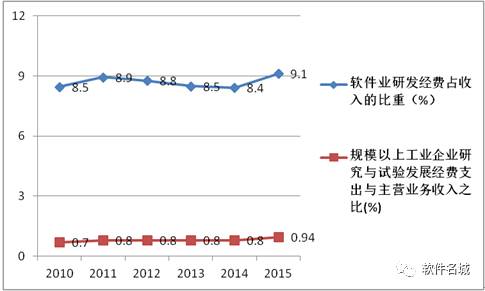
Figure 3 Proportion of R&D Expenditure from 2010 to 2015
In terms of investment returns, the software industry has a high return on investment, with labor productivity being nearly twice the industrial average. From the perspective of personnel quality, the proportion of software talent with a bachelor’s degree or higher in the software industry exceeds 77%, far higher than that in manufacturing, agriculture, and service industries. The proportion of software R&D personnel in the total number of employees exceeds 40%, as shown in Figure 4, making it a typical intellectual industry.
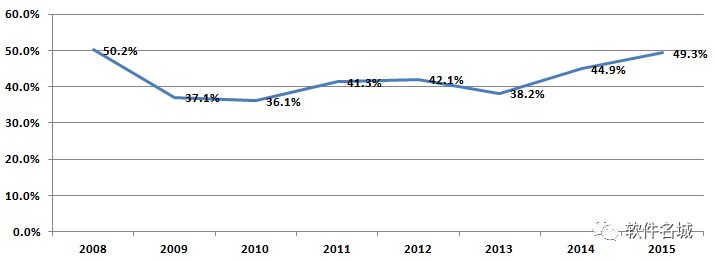
Figure 4 The Proportion of Software R&D Personnel in Total Employment from 2008 to 2015
Software has become the core engine defining urban innovation-driven development. The quality of urban economic growth, the level of efficiency, and the level of innovation increasingly depend on the degree of development of the information technology industry represented by software, as shown in the following charts.
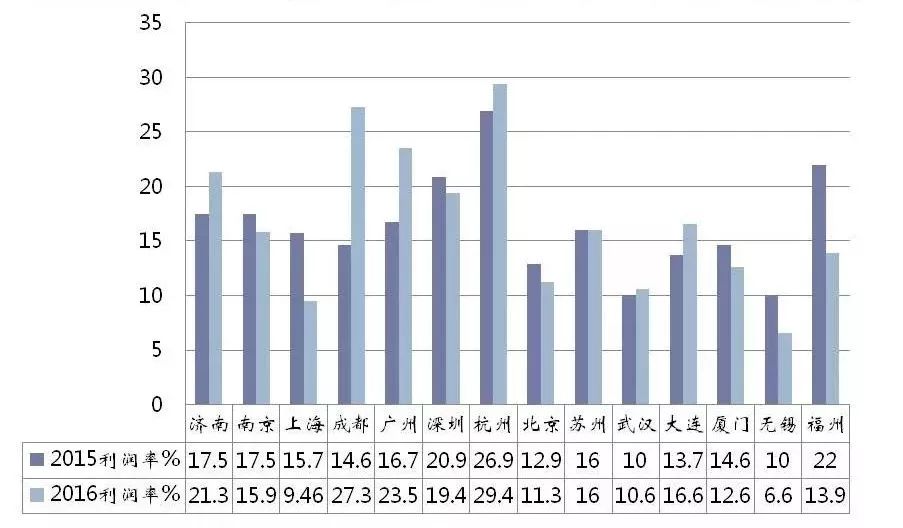
Figure 5 Comparison of Profitability of Chinese Software Cities and Some Created Cities in 2015-2016
Source: Ministry of Industry and Information Technology CSIP
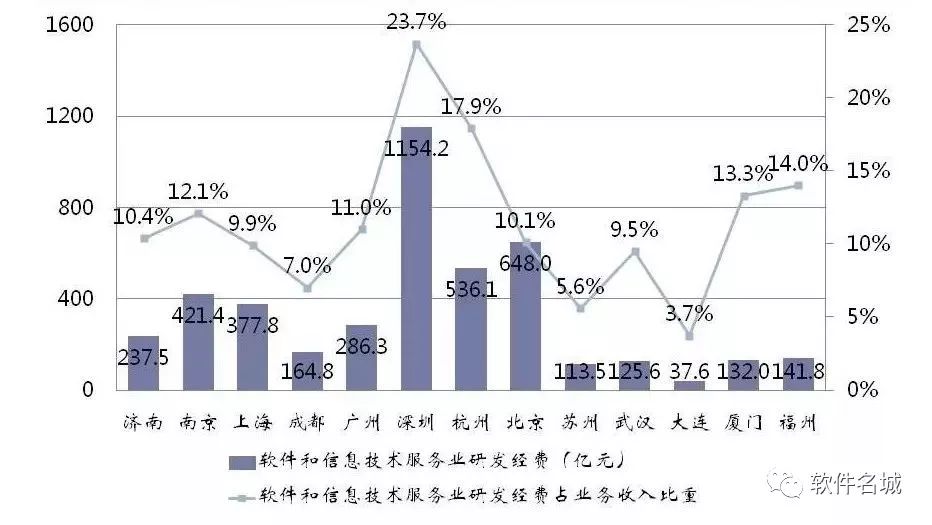
Figure 6 R&D Expenditure of Software Cities and Some Created Cities and Its Proportion of Business Revenue in 2016
Source: Ministry of Industry and Information Technology CSIP
(2) The Medium Perspective of “Software Defined” in Industry
From the medium industry perspective, through the widespread application of various industrial software, embedded systems, industrial big data, and system solutions, software technology is continuously enhancing the levels of product digitalization, design intelligence, process automation, system integration, management informatization, and business e-commerce in industries such as steel, petrochemicals, automobiles, communications, electricity, new energy, and energy conservation and environmental protection, increasingly becoming a key technology defining the transformation and upgrading of traditional industries.
The software industry is a foundational and strategic industry, driving the development of electronic components, integrated circuits, and other industries through the development of various basic software and application software, thereby promoting the overall development of the information and communication industries. Under the trend of software service orientation, the driving role of software is gradually transmitted to productive service areas such as logistics, finance, and commerce, becoming a key element supporting the transformation and upgrading of the service industry, as shown in Figure 7.
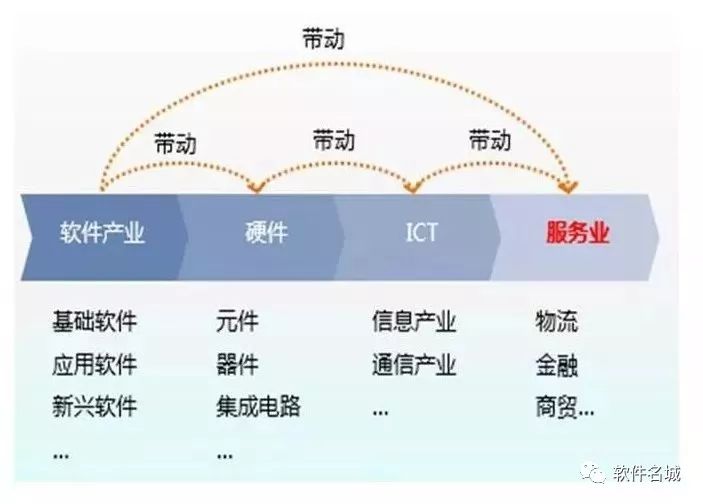
Figure 7 The Obvious Driving Role of Software
From the perspective of software promoting urban management and service enhancement, software technology is increasingly applied in areas such as smart healthcare, smart education, intelligent transportation, smart communities, smart energy, e-commerce, e-government, and resident card systems, becoming a key element defining urban management and service levels, enhancing the quality of urban development, and reshaping urban lifestyles.
(3) The Perspective of Industry and Sector Development of “Software Defined”
From Figure 8, it can be seen that the business areas of major software companies in China mainly revolve around various aspects of traditional industry development or sector development, providing relevant software products, solutions, and information technology services. The development of the software industry has played an important supporting role in the construction of the national economy and the development of various sectors, promoting the continuous improvement of the digitalization, automation, and intelligence levels across various industries.
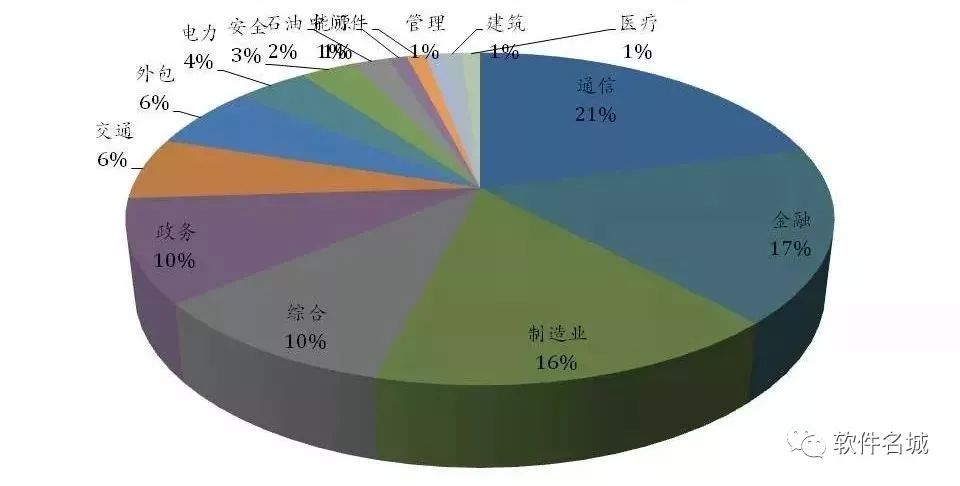
Figure 8 The Industry Proportion of the Top 100 Software Enterprises in 2016
From the following chart, it can be seen that 35.5% of software talent is distributed in the IT service industry, while more software talent is distributed across various industries, indicating the universality of software talent distribution and the universality of software application penetration. While it may be an exaggeration to say that the software industry defines the development of industries, there is indeed a very close relationship between the development of industries and the software industry, as shown in Figure 9.
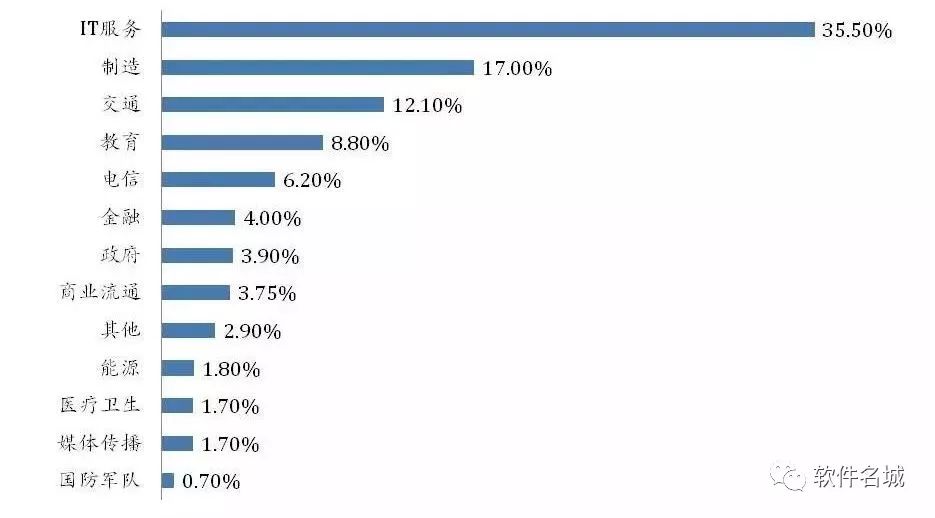 Figure 9 The Distribution of Software Industry Personnel in Various Industries in 2015
Figure 9 The Distribution of Software Industry Personnel in Various Industries in 2015
The full text is completed.
Please pay attention to the next special plan of the software-defined series.



